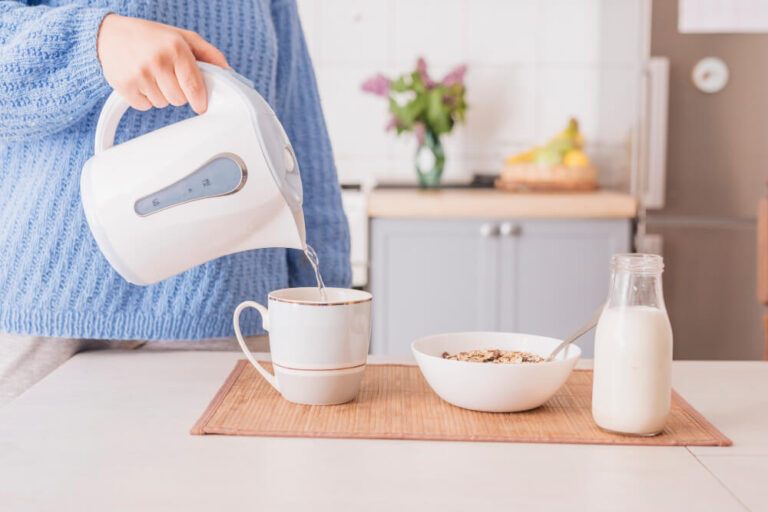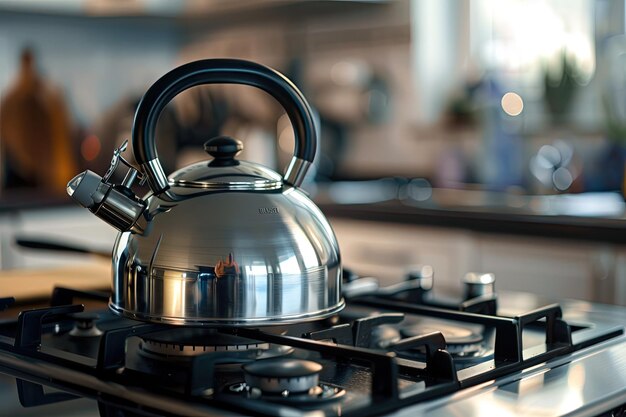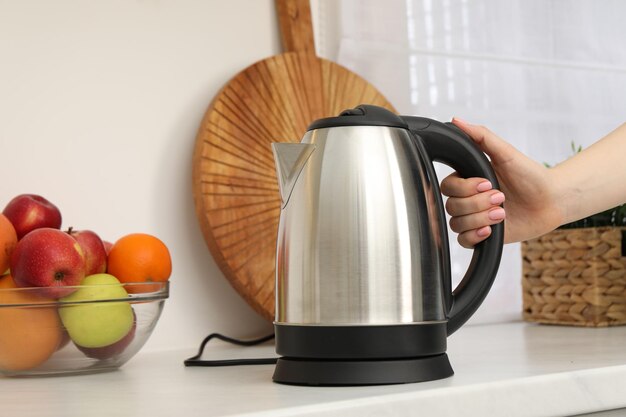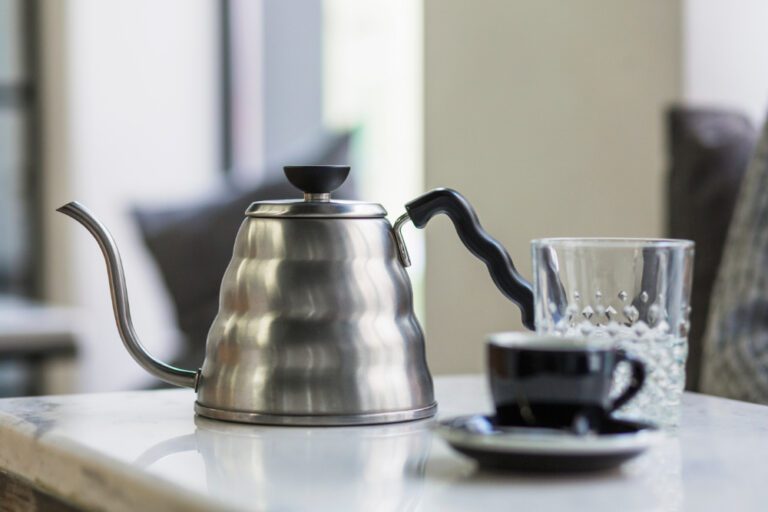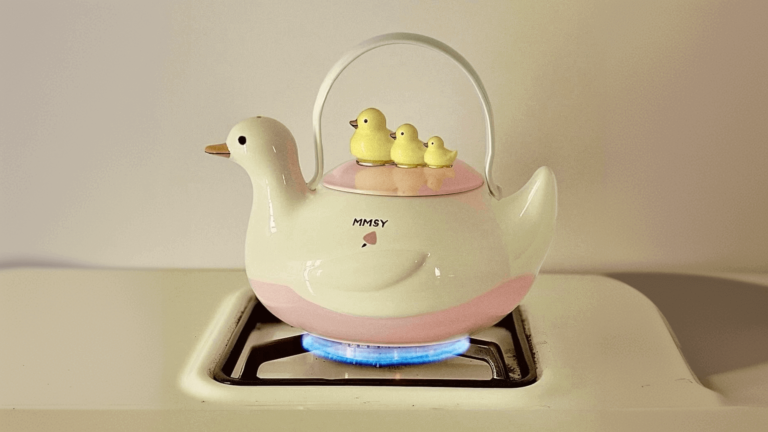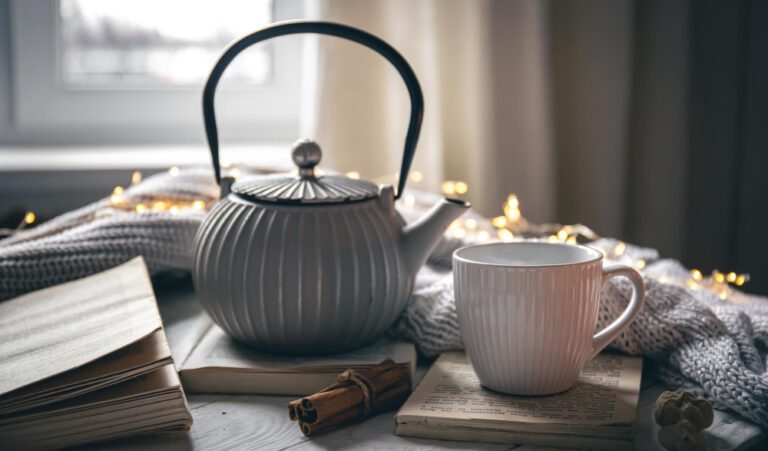How to Clean and Maintain Glass Kettle: A Step-by-Step Guide
Many kitchens now have modern and elegant glass kettles since more people enjoy them. They’re functional and attractive because the clear glass lets you see the boiling process.
Besides their elegance, the kettles’ glass bodies are easy to clean and maintain, making them good for the washing bowl.
They must be cleaned and maintained to stay functional and appealing. Clean and maintain glass kettle to prevent mineral deposits, stains, and bacteria, make it last longer, and boil better.
For a guide on choosing a quality glass kettle, check out our main article, Best Glass Kettles, which highlights top recommendations and features to look for.
Table of Contents
Why Cleaning and Maintenance Are Essential for Your Glass Kettle:
Materials Needed to Clean and maintain glass kettle:
The cleansing process of the glass kettle requires the availability of some cleaning aids, which are optional if you want deep cleansing agents.
Basic Cleaning Supplies:
Mild Dish Soap: Smooth on the glass and does a good job of cleaning without damaging the surface.
Soft Microfiber Cloth or Sponge: These are perfect for wet and dry cleaning the surface of the glass without scratching it.
Baking Soda: A natural cleaner with a gentle formula that can clean stains and build-up.
White Vinegar: An effective producer and remover of mineral coatings and deposits.
Water: Required when making other dilutions and for the final rinse of the surface being cleaned.
Optional Cleaning Agents:
Commercial Descaling Solution: Inexpensive commercial preparations are used for descaling kettles available in the market.
Citric Acid: A possible replacement for vinegar, it does an excellent job at dissolving minerals left on appliances.
Lemon Juice: Safe for use on glass kettles, lemon juice is a natural cleaning solution since it is already acidic
Tools for Deep Cleaning:
Wooden Spatula: It is most handy for washing off hard-hosed stains or mineral deposits on the glass surface or any type of food debris that might be stuck on the glass surface without causing any grinder scratches.
Toothbrush: It is ideal for washing small and narrow areas such as the spout or the filter area.
Soft, Non-Abrasive Pad: This is the ultimate natural coconut oil recipe for ultra-deep cleaning that will not scratch the glass.
Step-by-Step Guide for Cleaning Your Glass Kettle:
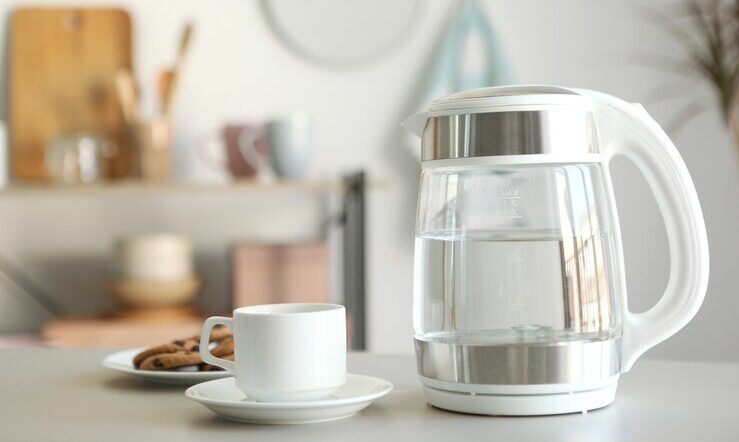
Preventing Mineral Build-Up In Glass Kettle:
Use Filtered or Distilled Water:
Use filtered or distilled water to avoid mineral deposits building up in your kettle. Hard water causes scaling, so it is recommended that purified water be used to prevent scale formation.
Regularly Descale the Kettle:
Descale the glass kettle at least monthly to ensure proper product functioning. If you use hard water in your home, do this often to avoid the tape sticking to the glass.
Wipe the Kettle Dry After Each Use:
To avoid the buildup of minerals on the surface of the interior part of the kettle, clean it with a dry cloth after each use. This reduces the possible range for residue accumulation over time.
Avoid Boiling the Same Water Multiple Times:
When water is boiled to prepare tea or coffee, the kettle will likely contain more minerals if the same water is boiled again. Do not use the same water for reheating because this will result in mineral deposits.
Common Issues and Troubleshooting of Glass Kettles:
Long-Term Maintenance and Care of Your Kettle:
Store Your Kettle Properly:
For your glass kettle, ensure that it is placed in a cool, dry place when not in use. Do not store it in areas with high relative humidity, as this will cause mold or mildew to form.
Avoid Overfilling the Kettle:
Using your kettle with too much water is dangerous. It may spill, and the water may damage the circuits. Always adhere to the manufacturer’s specifications regarding the maximum the bottle can hold.
Be Gentle with the Glass:
Glass is rather fragile, so be careful when using your kettle. Do not drop it or put it near a cold surface, as this could cause it to crack or break.
Regularly Check for Wear and Tear:
Check the condition of the wire, heating element, and gaskets for abrasive wear. If any part is missing or vandalized, be sure to seek a replacement from the manufacturer.
FAQs About Cleaning and Maintenance Of Glass Kettle:
Conclusion: The Key to a Well-Maintained Glass Kettle
Cleaning and maintenance are very important to ensure that your glass kettle serves you for a very long time. By following this guide, you can retain the kettle’s appearance, enhance its functionality, and increase its durability.
If the kettle is clean and shiny, it also boils the water safely and perfectly for brewing tea, coffee, and other recipes. Maintenance of your glass kettle plays an essential role, making it a very useful kitchen tool every few years.

